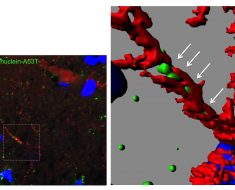NEW YORK (Reuters Health) – Treatment with a gonadotropin-releasing hormone analog (GnRHa) during chemotherapy in premenopausal women with breast cancer reduces ovarian impairment, according to a randomized controlled trial conducted in China.
Studies on the use of GnRHa therapy to protect ovarian function have shown “mixed results” for a variety of reasons, Dr. Xiangyun Zong of Shanghai Jiao Tong University Affiliated Shanghai Sixth People’s Hospital and colleagues note in JAMA Oncology.
To investigate, they did an open-label trial involving 330 women aged 18 to 49 years with operable breast cancer for which treatment with adjuvant or neoadjuvant cyclophosphamide-containing chemotherapy was planned.
Half underwent chemotherapy without and half with GnRHa therapy, which consisted of 3.6 mg of goserelin or 3.75 mg of leuprorelin by subcutaneous injection once every 28 days from one to two weeks before the first cycle of chemotherapy to four weeks after the last cycle of chemotherapy.
At 12 months after the completion of chemotherapy, the rate of premature ovarian insufficiency was significantly lower in the GnRHa group than the control group (10.3% vs. 44.5%; odds ratio, 0.23; P<0.001). Premature ovarian insufficiency was defined as anti-Muellerian hormone levels of less than 0.5 ng/mL.
Anti-Muellerian hormone resumption at 12 months was significantly more common in the GnRHa group than in the control group (15 of 25 vs. six of 44; odds ratio, 4.40; P<0.001).
After a median follow-up of 49 months, there were no between-group differences in four-year overall survival and tumor-free survival (secondary endpoints). However, a post hoc analysis indicated that GnRHa was associated with improved tumor-free survival in patients younger than 35 years.
Based on their findings, the researchers say GnRHa therapy “should be used to protect ovarian function in premenopausal women who are receiving chemotherapy for breast cancer.”
This study had no commercial funding, and the authors report no conflicts of interest.
SOURCE: https://bit.ly/32K0yEf JAMA Oncology, online December 30, 2021.
Source: Read Full Article





